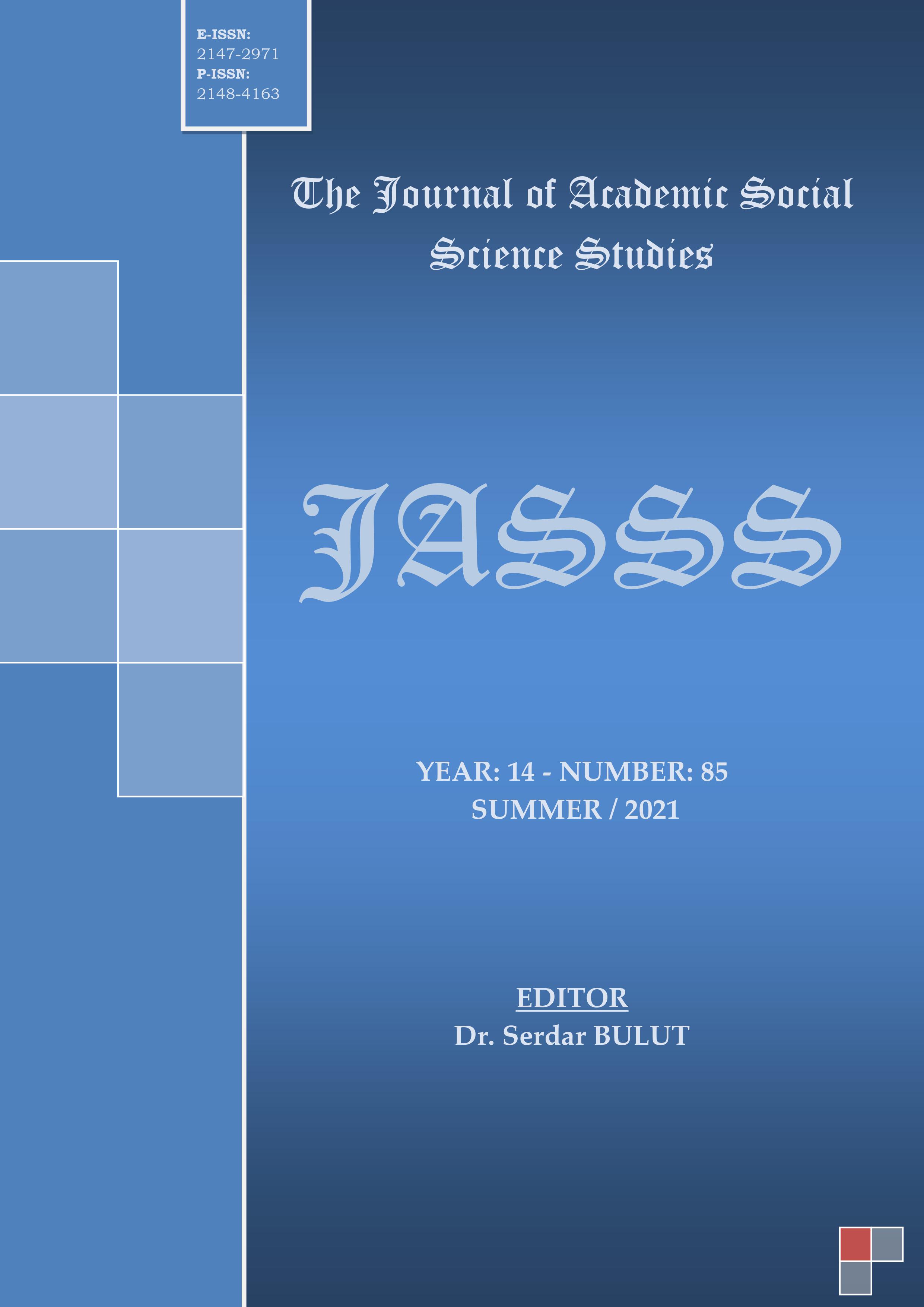Author :
Abstract
Kameralizm yönetim bilimi ve kamu yönetimi düşüncesinin bilimsel bir inceleme alanı olması yanında hem Kıta Avrupasını hem de Tanzimattan günümüze Türk kamu yönetimini de etkisi alması hasebiyle önemli bir düşünce olarak görülmüştür. Merkantilizmin oluşturduğu ekonomik refahın sağlanması ve modern merkezi devletin kurulmasında Almanya merkezli bir gelişme gösteren kameral bilimler kürsüleri devlet bilimi (Staatswisenchaften) denilen alanı da kapsamıştır. Devletin modern anlamda yeniden yapılandığı bir döneme de tekabül eden kameralizm maliye, hukuk ve ekonomi gibi üç temel alt bileşenden oluşmuştur. Devletin ekonomik olarak çalışan ve altyapısı oluşturulmuş bir hukuk sisteminde vergi alabilmesi ve oluşturduğu kaynaklarla refah oluşturabilmesi anlayışı hakimdir. Kıta Avrupası yönetim bilimi anlayışını yansıtan ve Anglo Amerikan kamu yönetimi düşüncesinden gelenek olarak farklılıklar gösteren kameralizm 19. Yüzyılın başlarından itibaren Osmanlı bürokratlarının da ilgisini çekmiştir. Kameralizm, Viyana sefirliği de yapan Sadık Rıfat Paşa üzerinden Tanzimat döneminin bürokratik reformistlerine cazip gelmiştir. Devleti modern bir düzene koymak, vergi sistemini kurabilmek ve idarede reformları da içeren kameralizmin belki öngörülmese de bürokratik elitizme/despotizme giden boyutu dikkate alınmadı. Tanzimat Fermanı yönetilenlere hitap ettiği kadar yönetenlere de klasik Osmanlı kanun-u kadim anlayışı dışında yeni bir zihniyeti işaret ediyordu. Kul bürokrasinin can ve mal güvenliğini zedeleyen prangalarından kurtulan Osmanlı bürokrasisi Kameralizmi devleti kurtarmak için bir çare olarak görürken Ortaylı’nın da dediği gibi bürokratik egemenliklerini de ilan etmişlerdir. Bu anlamda çalışmamızda kamu yönetimi disiplininin özellikle Kıta Avrupa’sındaki gelişimine önemli katkılar sağlayan Kameralizmin genel hatları ortaya konarak Osmanlı Devleti’ni reform sürecinde nasıl etkilediği ortaya konmaya çalışılmıştır.
Keywords
Abstract
Cameralism is seen as an important current because of the fact that it was a field of study in administrative science and public administration idea and also prominent in the continental Europe and Turkey from Tanzimat Era. Cameralism, having been providing economic welfare and constitution of a modern state, contained the field called state science (Staatswisenchaften): Cameralism compromised of three main components like finance, law and economy, as it coincided with the building of the modern state. It is the prominent idea that the state could tax within the legal framework that functioned economically and created welfare with the sources it created. Reflecting the continental understanding of administrative science and showing some differences from the Anglo-Saxon public administration approach, cameralism drew attraction to the Ottoman bureaucrats from the beginning of 19th century. Cameralism was found attractive by Tanzimat reformist bureaucrats through Sadık Rıfat Pasha who was then Vienna Ambassador. Though it was left undiscovered of the respects of Cameralism that led to bureaucratic elitism/despotism, Cameralism was used to put the state in modern design, constitute a taxation system and create administrative reforms. Tanzimat Declaration addressed the ruled as much as the rulers from outside the ancient rules in classical Ottoman. Having got rid of the restriction on life and property coming from subject bureaucracy , Ottoman bureaucracy, as Ortaylı points out, declared their independence as they saw Cameralism as the only cure to save the state. In this sense, in our study, the general lines of cameralism, which has contributed significantly to the development of the discipline of public administration, especially in Continental Europe, has been put forward and how it affected the Ottoman Empire in the reform process.
Keywords
- Abadan, N. (1959). Bürokrasi. AÜ SBF Yayınları. Ankara.
- Aktel, M., Kerman, U.; Altan, Y. ve Güven, F. (2015). Kameralizmi Anlama Çabası. Mehmet Akif Ersoy Üniversitesi Sosyal Bilimler Enstitüsü Dergisi, 7(12):83-98.
- Altunok, M., (2012), Türkiye’de Kamu Yönetimi Düşüncesi, Gazi Kitabevi, Ankara.
- Hocaoğlu,D., (1997) Bir Entelektüel Despotizmi: Kameralizm., Yeni Türkiye Dergisi. Sayı.18, ss. 375-381
- Johnson, H. C., (1964), The Concept Of Bureaucracy in Cameralism, Political Science Quarterly, Vol. 79, No.3, New York, ss. 378-402
- Kalfa, C., (2011), Kamu Yönetimi Disiplininin Gelişimi ve Kimlik Tartışmaları, Süleyman Demirel Üniversitesi İktisadi ve İdari Bilimler Fakültesi Dergisi, Sayı: 16/1, Isparta, ss.403-417
- Karasu, K., (2004), “Kamu Yönetimi Disiplininin Kökenine İlişkin Bir Not”, II.KamuYönetimi Forumu, Ankara; http://kamyon.politics.ankara.edu.tr/bulten/belgeler/04.pdf; 19.11.2017.
- Mardin, Ş. (1985). 19. Yüzyılda Düşünce Akımları ve Osmanlı Devleti. Tanzimat’tan Cumhuriyet’e Türkiye Ansiklopedisi. C.2, İletişim Yayınları, İstanbul.
- Mardin, Ş. (2006). Batıcılık. Türk Modernleşmesi Makaleler 4, (Der. M. Türköne, T. Önder), 16. B., İletişim Yayınları, İstanbul.
- Nasrullah, A. M., (2005), From Public Administration to New Public Management: An Analysis, Pakistan Journal Of Social Sciences, Sayı:3/1, Punjab, ss.197-204
- Ortaylı, İ. (2007). Türkiye Teşkilat ve İdare Tarihi, Cedit Neşriyat, Ankara
- Örs, A. S., (2013), Kameralizm ve Osmanlı Devletine Etkileri (1808 - 1876), Yayınlanmamış Yüksek Lisans Tezi, Afyon Kocatepe Üniversitesi Sosyal Bilimler Enstitüsü, Afyonkarahisar
- Özer, M. A., S. M., Önen (2017), 200 Soruda Yönetim Kamu Yönetimi, Gazi Kitabevi, Ankara
- Reinert, S. A., (2005), Cameralism and Commercial Rivalry: Nationbuilding through Economic Autarky in Seckendorff's 1665 Additiones, European Journal Of Law and Economics, Vol.19, ss.271-286
- Saklı, A. R., (2011) Disiplinler Arası Bir Disiplin Olarak Kamu Yönetimi, Gazi Üniversitesi İktisadi ve İdari Bilimler Fakültesi Dergisi, Sayı:13/2, Ankara, ss. 97-120
- Saklı, A. R., (2013), Kamu Yönetimi Disiplininin Kökenleri: Prusya Ekolü, Ege Akademik Bakış Dergisi, Sayı:13/3, İzmir, ss. 285-294
- Şaylan, G., (1996), Bağımsız Bir Disiplin Olarak Kamu Yönetimi, Amme İdaresi Dergisi, Sayı:29/3, Ankara, ss.3-16
- Thornhill, C., (2006), The Domain Of Public Administration, Journal Of Public Administration, Vol. 41, No. 4.1, Oxford, ss. 793-806
- Tortop, N.; İsbir, E. G. ve Aykaç, B. (1993). Yönetim Bilimi, Yargı Yayınları, Ankara.
- Yavaş, H., K. A., Demir, (2015), Kamu Yönetiminin Geleceği Üzerine Kavramsal Bir Tartışma, Yönetim Bilimleri Dergisi, Sayı:13/25, Çanakkale, ss. 91- 113
- Yıldız, M., C., Babaoğlu ve Şahin, B. (2016), Kamu Politikasını Türk İdare Tarihi Üzerinden Çalışmak, Hacettepe Üniversitesi İktisadi ve İdari Bilimler Fakültesi Dergisi, Sayı:34/2, Anakara, ss. 133-158
- Yücel Batmaz, Nazlı (2014). Kameralizm maddesi, Kamu ve Özel Sektör Yönetimi İçin Yönetim Sözlüğü. Adalet Yayınevi, Ankara.





